More information
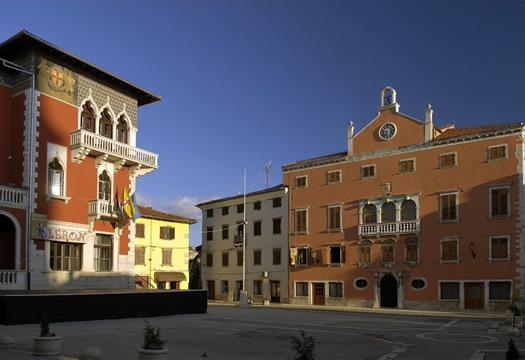
10 kilometres from Bale, on the way to Pula, you will find the small town of Vodnjan.
There are many places like Vodnjan on the Mediterranean, but several important exceptions will make your visit interesting and worthwhile. Namely, the best olive oils in the world are produced right here.
Vodnjan will uncover pretty vistas of old stone streets crested on the traces of prehistoric settlements. Should you walk along Vodnjan you’ll surely notice numerous buildings from various time periods. There are six churches in Vodnjan, the most interesting is the church of St Blase with its 62 meter high bell tower – the highest in Istria. The interesting thing about this church is that there are also three mummies kept in this church for centuries; none of the bodies has been embalmed. These mummies are the best preserved mummies in Europe. A collection of sacral arts with 370 exhibits and 250 relicts of saints is also being kept here.
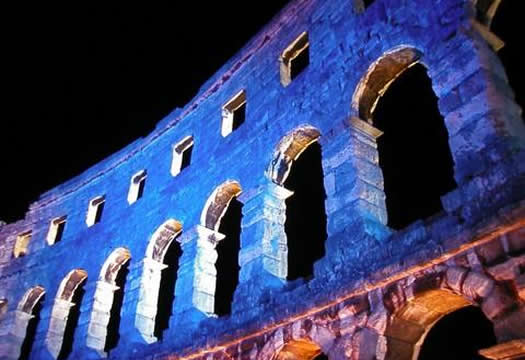
Pula, the largest Istrian town, is located some 30 kilometres away from Bale. It is a town of an extraordinary history which offers many interesting things from various historic periods. The most famous ancient monument, the amphitheatre – Arena, found its place in the very heart of Pula. The purpose of the building were gladiator games since it was built in the 1st century A.D. during the reign of Emperor Vespasian
The Arena of Pula is the 6th largest amphitheatre in the world. Three thousand years of Pula’s history intertwine in a town which is today the biggest cultural and economic centre of Istria. It is town where Roman temples stand by baroque palaces, early Roman Catholic churches and Austrian villas.
While in Pula, make sure you walk across the Sergi street, swing by the Augustus temple, pause by the Twin gate and climb to the Kaštel (Castle). Take a break at the Forum, the main town square where people have been socializing from the period of the Emperor Augustus. Pula’s fascinating history is surely a reason for you to visit.
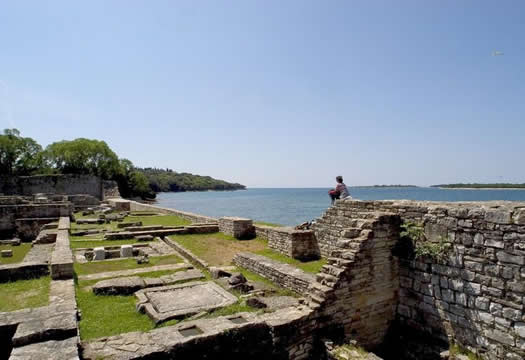
There is a beautiful view on the islands of Brijuni from Bale. If the view motivates you to visit the islands, you'll have to head to Fažana, a small fishermen place, and take the boat there.
The Brijuni NP is the only national park in Istria – its 14 islands are spread on 298 acres (736 hectares).
It is said that the Brijuni archipelago is one of the most beautiful on the Mediterranean. It is rich in flora since its founder, the Austrian businessman Kupelwieser, planted various world species there. There are also numerous archaeological sites and several museums worth visiting there. Many famous jetsetters visited Brijuni during the past century.
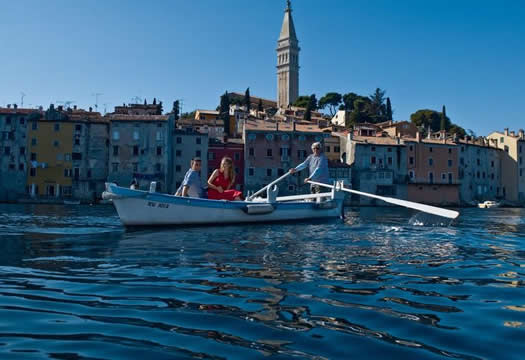
Only fifteen kilometres away from Bale the most romantic town on the Mediterranean – Rovinj – is located. It is the right destination for all those longing for a sentimental atmosphere of past times. The town is from the sea side protected by a high rocky shore and house walls built on cliffs. And, from the land it is protected by solid rampart. When entering the old town though the arch of Balbi, pretty little streets will bring you to the St.Eufemia (or St Fuma) church – the biggest and the most important monument in Rovinj. It is a Venetian style baroque building dedicated to the saint and martyr whose sarcophagus came (by a sailboat) to Rovinj around the year 800.
The coast between Rovinj – Rovigno and Lim fjord, its islands and hinterland, are a landscape with beautiful forests of holm and pine. The Punta Corrente (Golden cape) is the most important public garden area on the eastern Adriatic coast, while the Monfiorenzo quarry represents a geologically protected area of a worldly value. There is much more for you to discover in Rovinj.
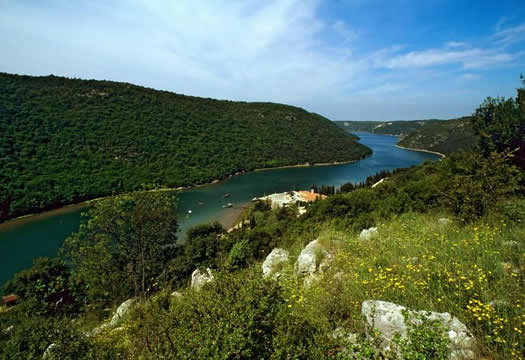
If you decide to go from Bale to Poreč, make sure you stop and visit the Lim fjord. It is a part of the 35 kilometre long Lim hollow spreading almost all the way to central Istria – the town of Pazin. Lim fjord is a bit more than 10 kilometres long, up to 30 meters deep and its widest part is 600 meters wide.
The bay water is partly brackish, due to underwater freshwater springs and thus suitable for plant and animal life development. It is also a well-known fish and scallops farm (oysters, mussels, sea bass, bream…).
In the ages before Christ, Illyrians had been building their settlements on the surrounding hills – nowadays known as the Illyrian ruins.
The Romuald’s cave, where various church rituals took place in the 11th century and later, is situated here. The cave has been cleansed and opened to the public, while the Lim bay has the status of protected landscape.
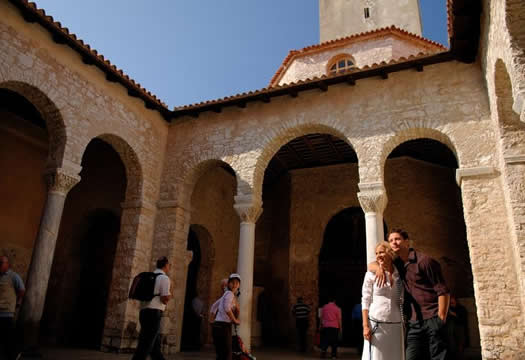
Should you continue your drive from Lim fjord towards the border crossing, you’ll reach Poreč, only 30 kilometres away from Bale. Poreč is one of the most important tourist destinations in Istria. The town and its people have an almost century long experience in tourism and this one-time Roman colony represents an extraordinary example of a Romanesque architecture town with magnificent Venetian gothic palaces. This is why walking through the streets of Poreč will be unforgettable.
Its orthogonal street system has been preserved to this day. During the reign of the Byzantine emperor Iustinian, Poreč reached its peak in glory. The Euphrasius’ Basilica situated in the very town core is a monument which leaves no one indifferent. The Byzantine style basilica was built in the mid-6th century during bishop Euphrasius. Its mosaics (both facade and interior) belong amongst the most beautiful preserved pieces of Byzantine art. The entire complex is included on the UNESCO cultural world heritage list.
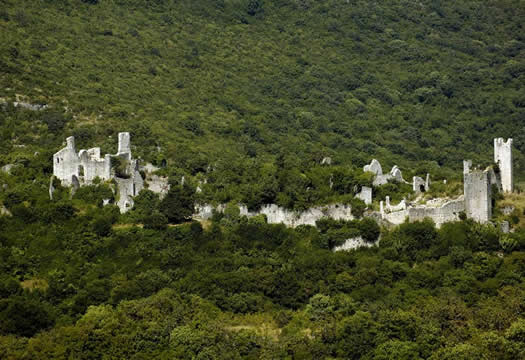
There aren’t many beautiful and exciting dead towns in the immediate vicinity of populated places in the world – like Dvigrad in the county of Kanfanar very near Bale.
Dvigrad – it is two towns. There is only one left in ruins on the northern side, the other (called Parentin) on the southern part is completely gone. Dvigrad’s history can be followed though archaeological findings and written documents all the way to prehistory.


